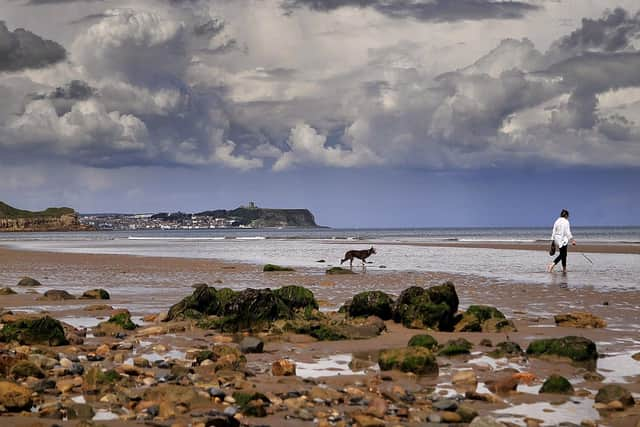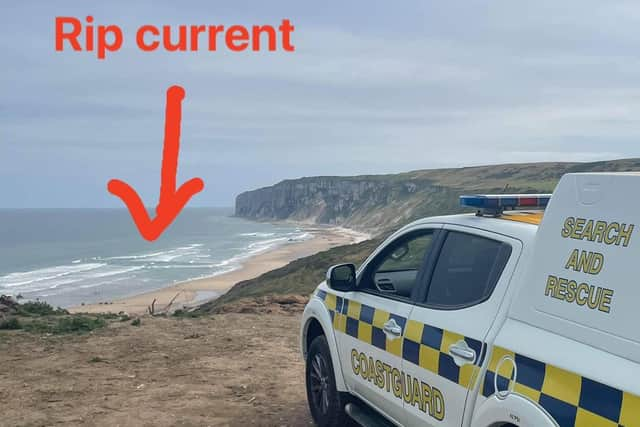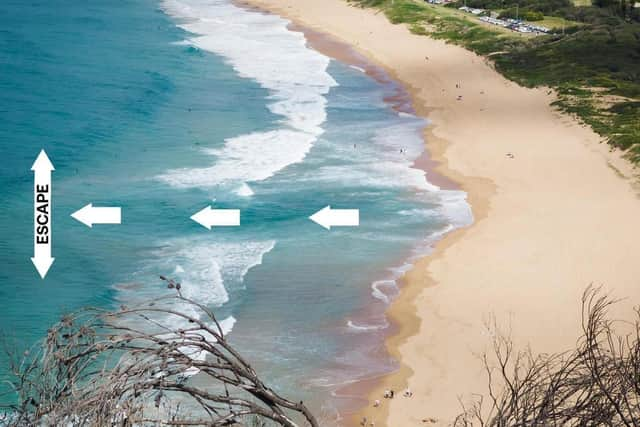North Yorkshire's emergency services offer advice on water safety as two people die in separate incidents on same day
and live on Freeview channel 276
Last Thursday, July 23, a man died after being rescued from a rip tide at Reighton Gap near Filey. Two teengers were taken to hospital.
The RNLI, coastguard, police and fire services in the county have warned the public about the dangers of swimming and offered water safety advice.


What is a rip tide?
Advertisement
Hide AdAdvertisement
Hide AdRips are strong currents running out to sea, which can quickly drag people and debris away from the shallows of the shoreline and out to deeper water.
They tend to flow at 1–2mph but can reach 4–5mph.
Rips are especially powerful in larger surf, but are also found around river mouths, estuaries and man-made structures like piers and groynes.


Filey Coastguard team said: "Locally rip currents can be transient, with the sand causing them to move with each tide. They may also exist only under certain stages of the tide.
"Rip currents can be difficult to spot, but have the power to sweep even the strongest and experienced beachgoer out to sea – some reaching speeds 3 times faster than an Olympic swimmer!"
What to do if caught in a rip tide
Advertisement
Hide AdAdvertisement
Hide AdFiley Coastguard ream said: "If you can, always choose a lifeguarded beach, swim between the yellow and red flags and take advice from the lifeguards.


"Don’t try to swim against [a rip] or you’ll get exhausted, if you can stand, wade don’t swim.
"If you can, swim parallel to the shore until free of the rip and then head for shore, raise your hand, shout for help.
"If you see anyone else in trouble, call 999 ask for the Coastguard.
Advertisement
Hide AdAdvertisement
Hide Ad"Don’t enter the water yourselves as you may add to the number of people who require rescue from the water."
How to prevent accidents in the water
North Yorkshire Police and North Yorkshire Fire and Rescue said:
• Look around and see if there's any rescue equipment nearby.
• If you accidentally end up in the water don't panic. Relax, extend your arms and legs and float on your back until you can control your breathing.
Advertisement
Hide AdAdvertisement
Hide Ad• If you're visiting open water with your family, always supervise children, drowning can happen fast and silently
• Don’t mix water with alcohol. You are more likely to get into difficulty if you have drunk alcohol - don’t drink and swim.
• Don’t get cut off by the tide: Check the times of high and low water before swimming in the sea or in estuarine waters.
What to do if someone gets into difficulty in the water
North Yorkshire Police said: "Although many people’s natural instinct will be to try and save someone in difficulty, resist the urge to jump in - as soon as you enter the water, you will be putting your life in danger too.
Advertisement
Hide AdAdvertisement
Hide Ad"Try to reach the person with a long stick, a scarf, clothes or anything else and crouch or lie down to avoid being pulled in."
"Throw a rope if you have one to try and pull the person back to shore.
"Otherwise throw something that will float such as a ball, a plastic bottle or a lifebuoy."
Drowning prevention
Sunday July 25 was the United Nations’ international drowning prevention day
Advertisement
Hide AdAdvertisement
Hide AdScarborough RNLI crew members and lifeguards took part in the event.
They were based on North and South Bay in Scarborough offering water safety advice and raising awareness of the dangers of the sea.
Many water-based activities were covered by the team ranging from water sports to a day on the beach with the family.
Visitors were given the opportunity to learn more about rip currents, cold water shock, and Float to Live, along with receiving advice on lifesaving equipment such as lifejackets, radios, and personal locator beacons.
Advertisement
Hide AdAdvertisement
Hide AdThe day was organised by Scarborough RNLI's volunteer water safety officer, Dave Grieves.
He said: "At the Lifeboat Station we interacted with 266 people and the South Bay lifeguards think they probably spoke to another 40.
However, many more were stopping and reading our signs as they went onto the beach.
"It's great to see people keen to learn how to be safe at the beach and it was a pleasure to help each and every one of them do just that. All in all, a very good day."
Summer holidays
Advertisement
Hide AdAdvertisement
Hide AdAs the school summer holidays begin and with a heatwave predicted in early August, the emergency services are reminding people to be careful and enjoy the water responsibly.
In the event of an emergency always dial 999 and ask for the fire service if inland and the coastguard at the coast.
North Yorkshire Police said: "Stay safe, look after each other and roll on the next spell of beautiful weather"
